

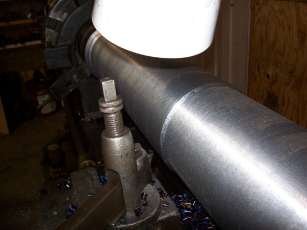 Work continued on reducing the diameter of the crankshaft from 8.5" to about 6.5". This photo shows the depth of a typical cut, about 1/4". (Photo by Grady Smith). |
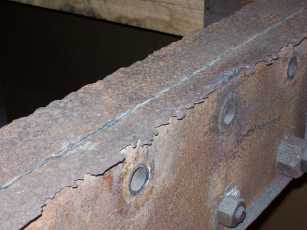 This is what the flanges of the main frame's "C" channels look like. They are severely deteriorated and must be replaced. (Photo by Grady Smith). |
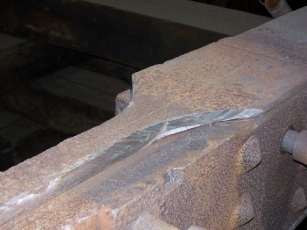 This view shows the main frame after the bad flanges were cut away. Each cut was almost 10 feet long and took about five hours. There are two more upper flanges to be cut off and four lower flanges (that will be much harder to cut). (Photo by Grady Smith). |
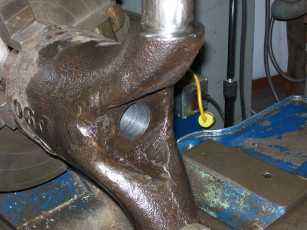 A horn (or trunnion) mounted in the lathe so the shaft can be partially drilled out. A small pilot hole was drilled, then followed by the larger hole shown above. This hole was then bored out until it reached the keyway and allowed the old shaft to be removed. (Photo by Grady Smith). |
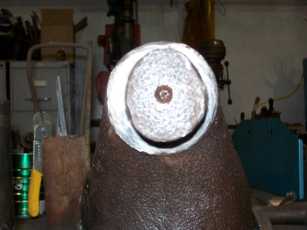 End view of a horn showing the severe shaft wear. The worn shafts will be welded up and machined back to the correct round diameter. (Photo by Grady Smith). |
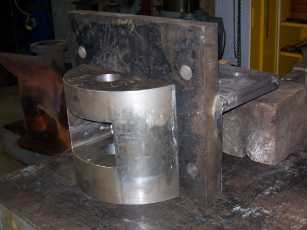 View of the partially completed articulation joint. The original was trashed in a smashup that ruined the tank frame. Its replacement was not a match for the half of the joint that evidently was not broken. This new fabrication matches the original.. (Photo by Grady Smith). |